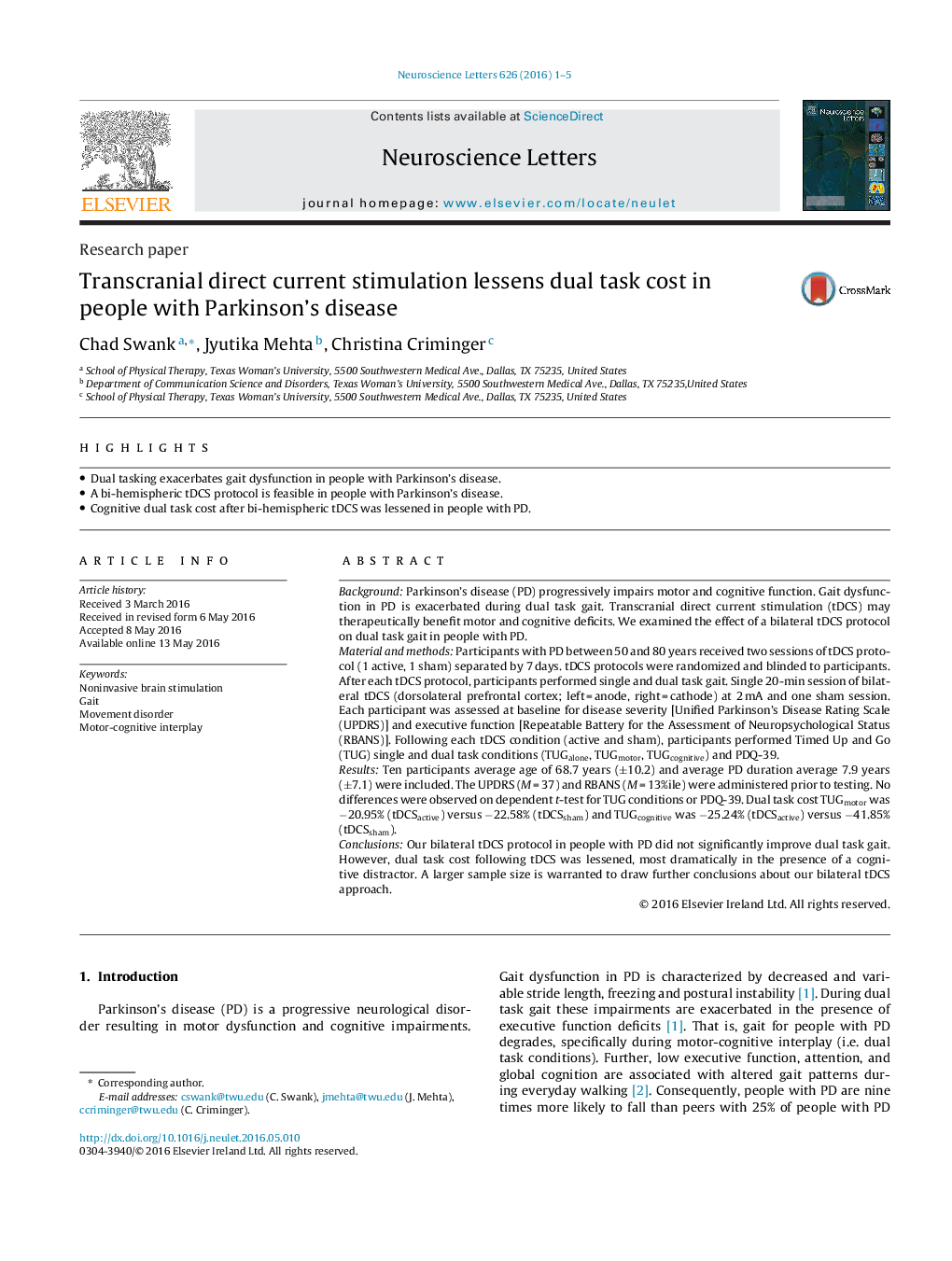| کد مقاله | کد نشریه | سال انتشار | مقاله انگلیسی | نسخه تمام متن |
|---|---|---|---|---|
| 4343172 | 1615073 | 2016 | 5 صفحه PDF | دانلود رایگان |
• Dual tasking exacerbates gait dysfunction in people with Parkinson’s disease.
• A bi-hemispheric tDCS protocol is feasible in people with Parkinson’s disease.
• Cognitive dual task cost after bi-hemispheric tDCS was lessened in people with PD.
BackgroundParkinson’s disease (PD) progressively impairs motor and cognitive function. Gait dysfunction in PD is exacerbated during dual task gait. Transcranial direct current stimulation (tDCS) may therapeutically benefit motor and cognitive deficits. We examined the effect of a bilateral tDCS protocol on dual task gait in people with PD.Material and methodsParticipants with PD between 50 and 80 years received two sessions of tDCS protocol (1 active, 1 sham) separated by 7 days. tDCS protocols were randomized and blinded to participants. After each tDCS protocol, participants performed single and dual task gait. Single 20-min session of bilateral tDCS (dorsolateral prefrontal cortex; left = anode, right = cathode) at 2 mA and one sham session. Each participant was assessed at baseline for disease severity [Unified Parkinson’s Disease Rating Scale (UPDRS)] and executive function [Repeatable Battery for the Assessment of Neuropsychological Status (RBANS)]. Following each tDCS condition (active and sham), participants performed Timed Up and Go (TUG) single and dual task conditions (TUGalone, TUGmotor, TUGcognitive) and PDQ-39.ResultsTen participants average age of 68.7 years (±10.2) and average PD duration average 7.9 years (±7.1) were included. The UPDRS (M = 37) and RBANS (M = 13%ile) were administered prior to testing. No differences were observed on dependent t-test for TUG conditions or PDQ-39. Dual task cost TUGmotor was −20.95% (tDCSactive) versus −22.58% (tDCSsham) and TUGcognitive was −25.24% (tDCSactive) versus −41.85% (tDCSsham).ConclusionsOur bilateral tDCS protocol in people with PD did not significantly improve dual task gait. However, dual task cost following tDCS was lessened, most dramatically in the presence of a cognitive distractor. A larger sample size is warranted to draw further conclusions about our bilateral tDCS approach.
Journal: Neuroscience Letters - Volume 626, 28 July 2016, Pages 1–5
